GVCV TASK 11 MARCH 2018 – STINCHCOMBE HILL, DURSLEY
See GVCV previous report dated 26/02/1017 giving a detailed description of the Stinchcombe Hill site and of our efforts to reverse the decline of the butterfly population with especial reference to the Duke of Burgundy, the Dingy Skipper, the Heath Fritillary and the Large Blue
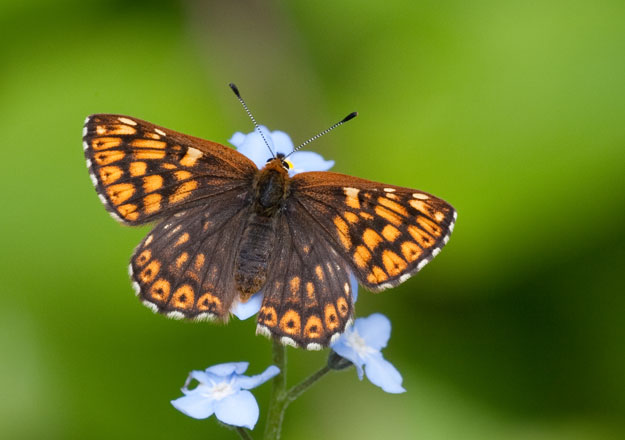
The Duke of Burgundy Fritilliary, the beneficiary of our efforts, we hope.
The site is managed by a warden from the Stinchcombe Hill Butterfly trust with a team of volunteers and their objective is to bring the site back to its original state of untreated Cotswold grassland forming an environment favoring orchids, butterflies and sky larks. This is an uphill struggle because lack of resources has allowed extensive encroachment of trees and shrubs.
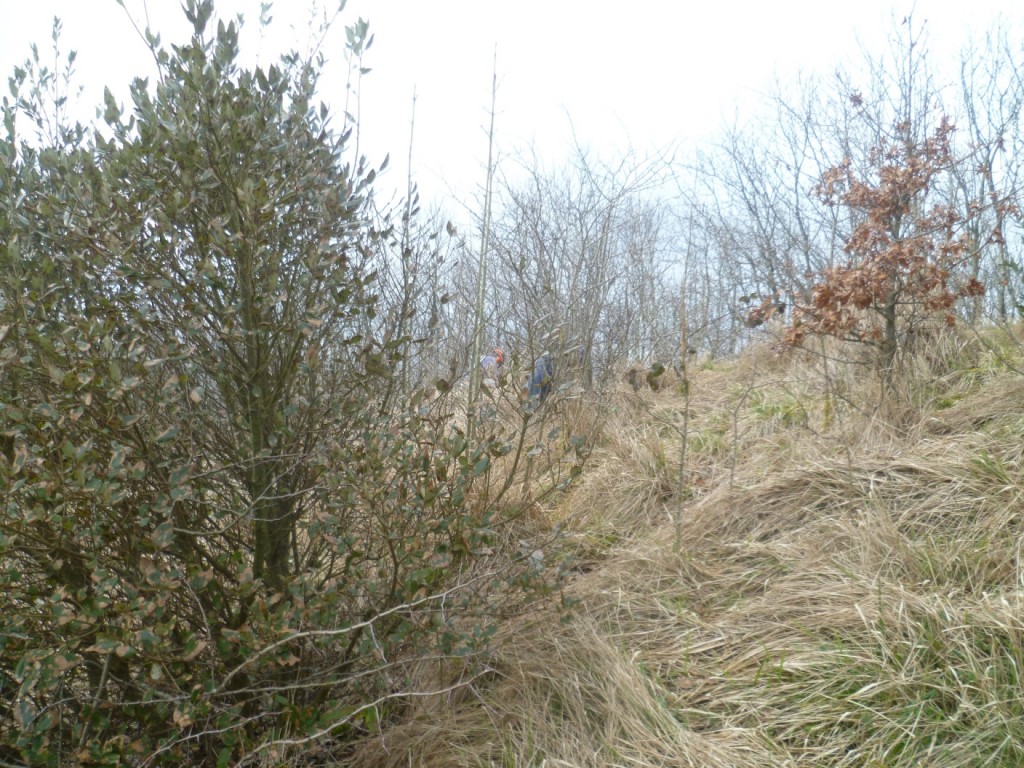
The “Before” picture
Our task on Sunday was to progress the clearance of the scrub etc on the Western slopes of Drakestone Point consisting mainly of Blackthorn and Holm Oak with patches of dense bramble.
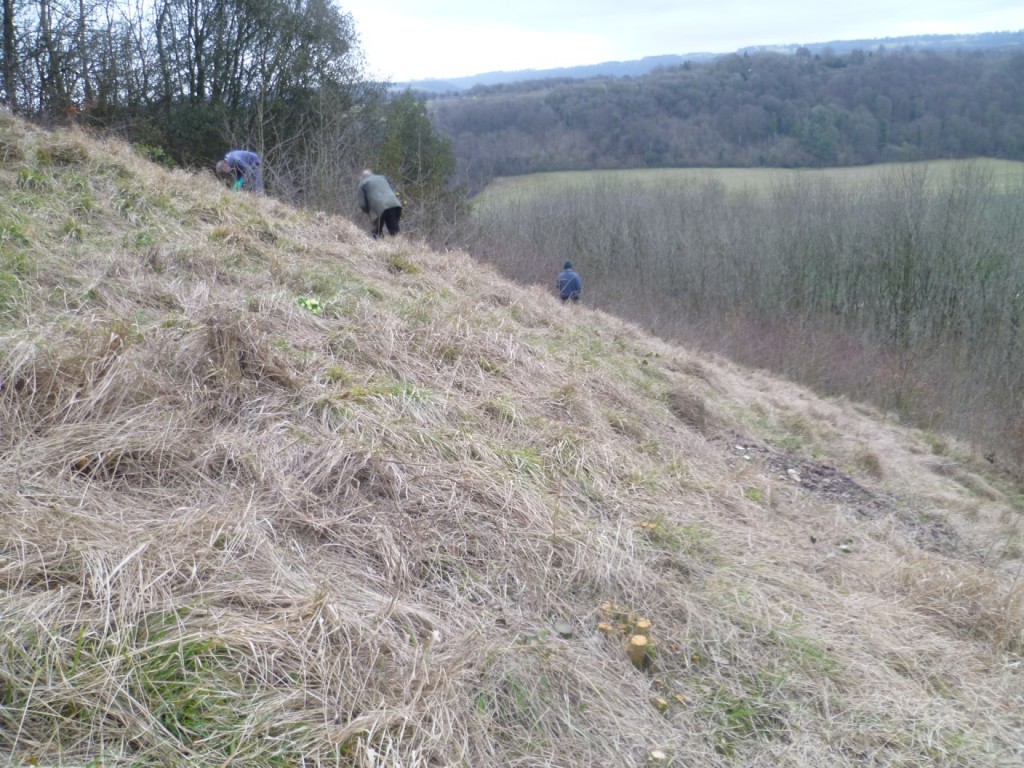
The “After” picture
Looks like objective achieved, at least for this small section of the site.
The bramble was tackled by the Warden who was armed with a brushcutter fitted with that fiercesome tool, a bramble basher or mulching blade. The normal brushcutter blade cuts sideways and would leave long strands of bramble at higher level, a hazard to the face and eyes of the operator. The bramble basher blade however is designed to drop down onto the top of the bramble clump and to reduce it to woodchip by the time it reaches ground level at the base of the plant. Very satisfying to use
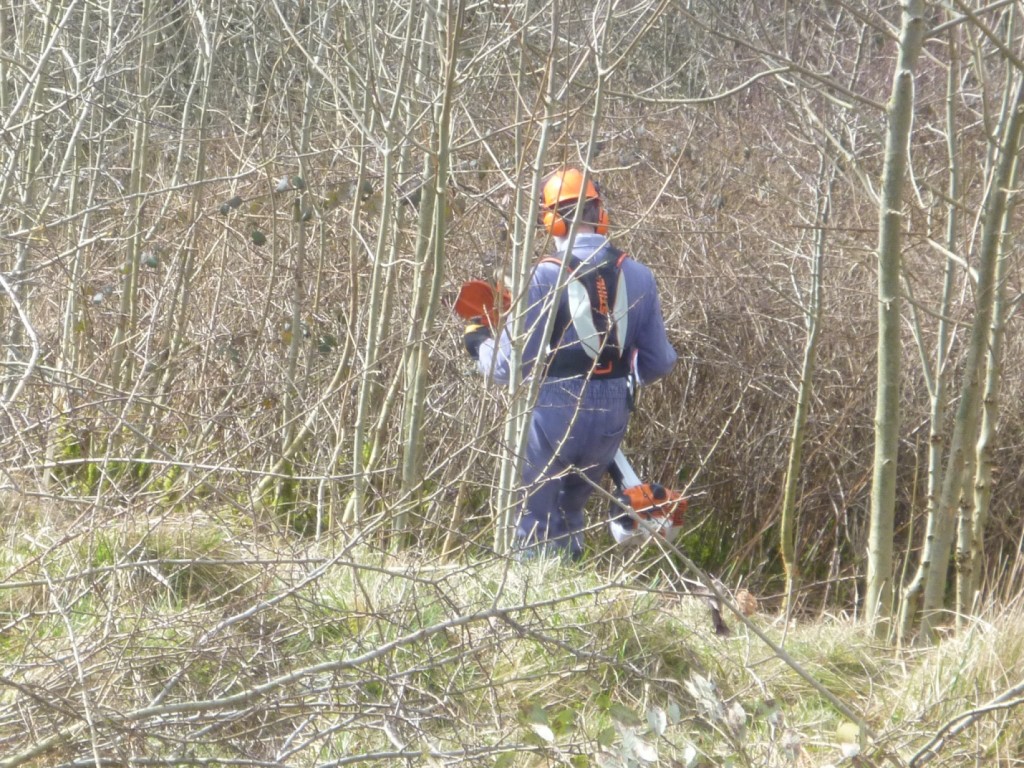
The Warden with his trusty brushcutter, preparing to plunge into the bramble clump
The remainder of the volunteers tackled the blackthorn etc with loppers and bushsaws, dragging the cut material to a fire site
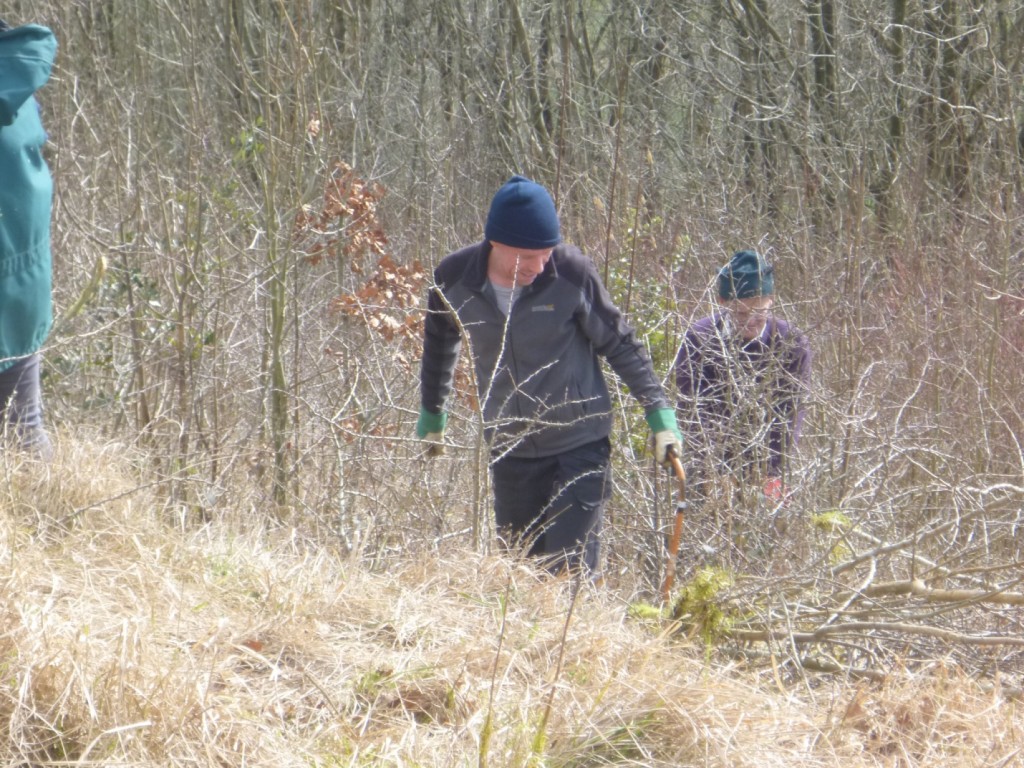
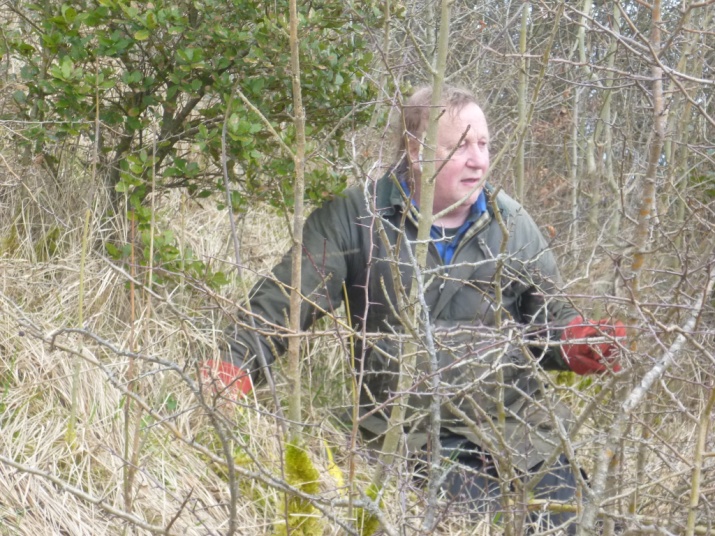
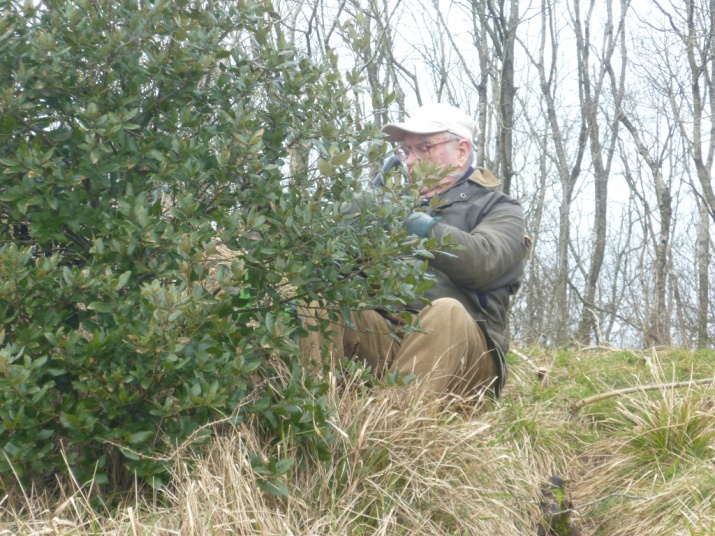
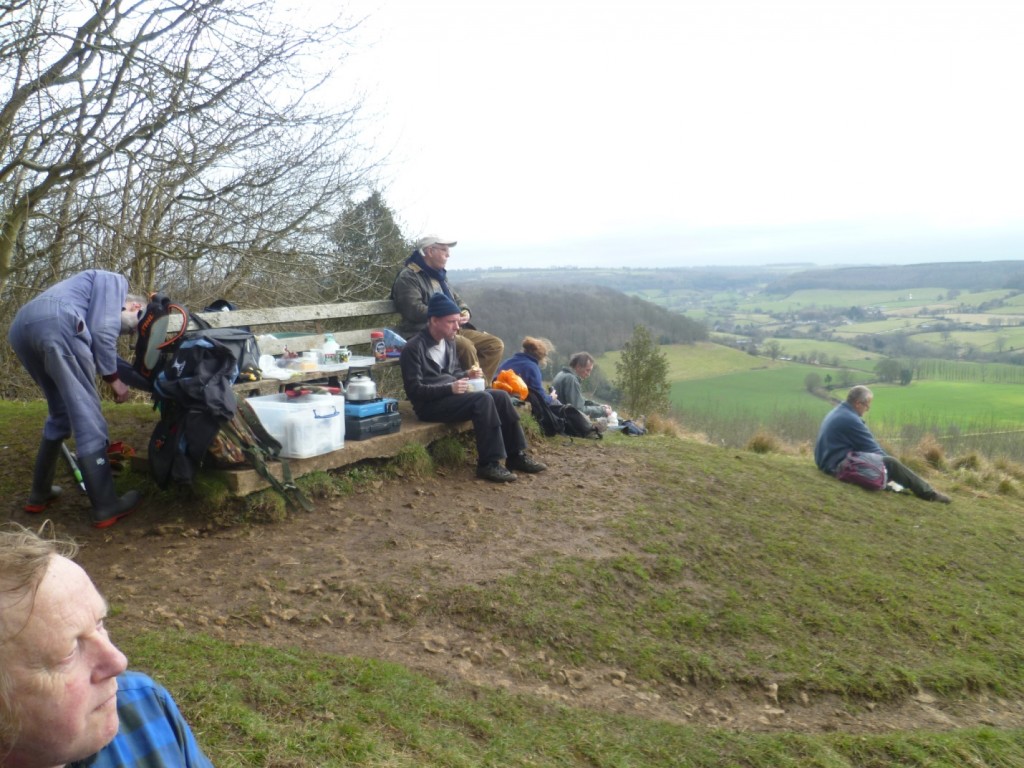
A welcome break for lunch,with a the panoramic view of the plain below us
There is some debate as to the ecological significance of bonfires as opposed to retaining the cut material in habitat piles but as soon as the material reaches any significant quantity then the advantages of habitat piles become disadvantages as the retained material covers the very grass we are trying to expose. Better far is a roaring bonfire, consuming the brash, warming the volunteers on cold days and providing the possibility of baked potatoes at lunchtime.
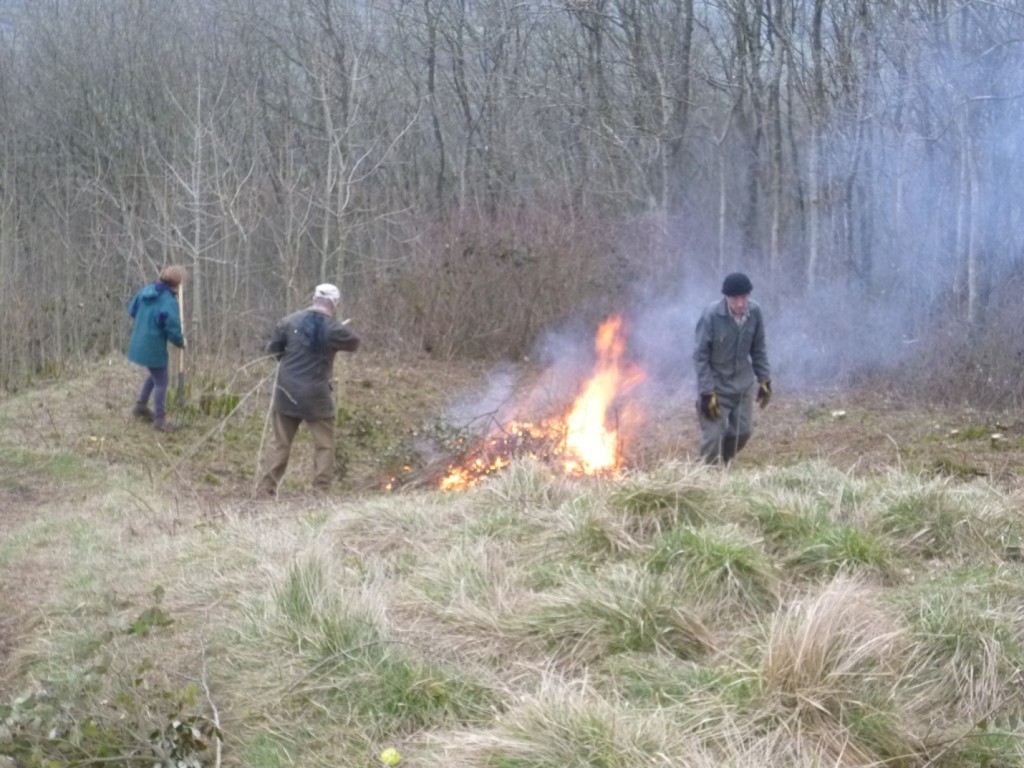
A good fire consuming the brash we produced and leaving only wood ash behind.
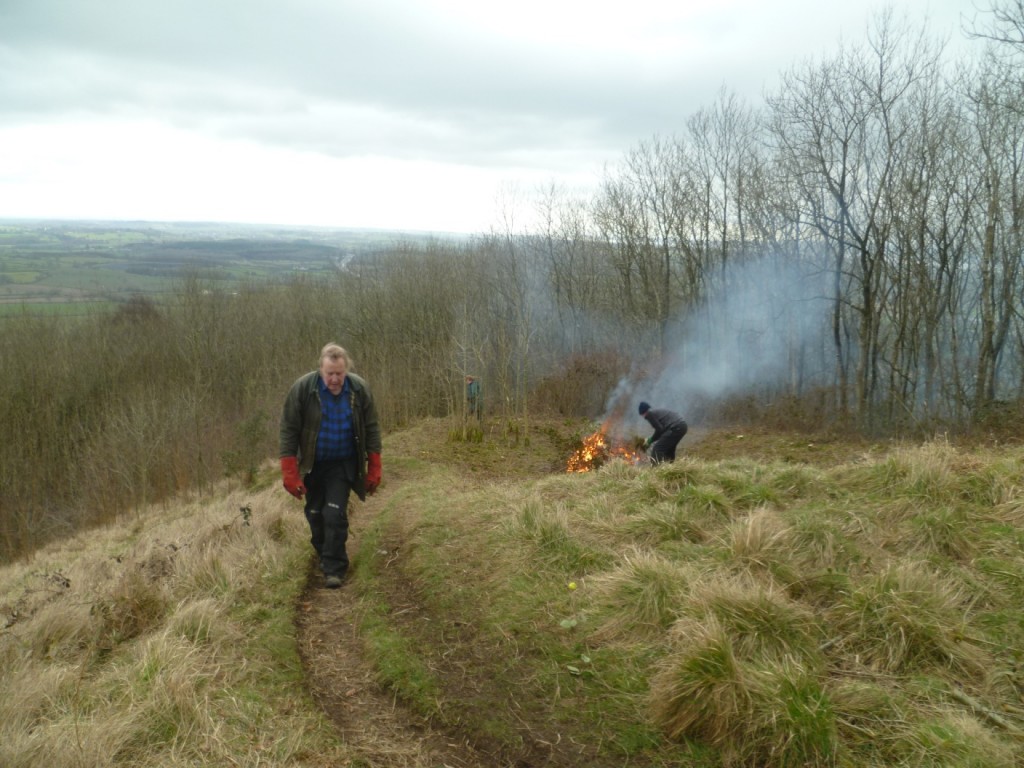
At the end of the working day, the light is going, energy is long gone, and the prospect of home and a hot bath is beckoning.
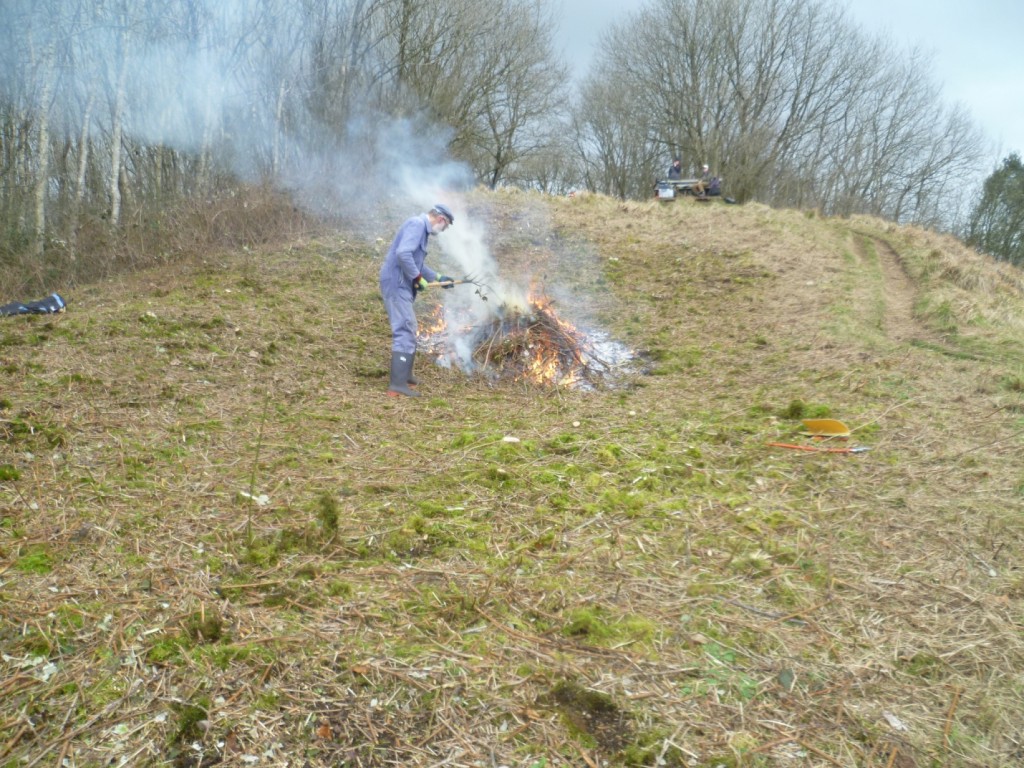
Damping down the fire so as to leave it safe when we go
Nature being nature, the material we cut begins to re-grow as soon as we turn our backs and there are many sites where we return year after year to repeat the process in the same location. In order to prevent this efforts are made to paint the cut stumps with glyphosate which kills the roots of the plant. This must be done within minutes of the stem being cut else the capillaries will self seal and use of this powerful chemical can only be by a trained and licensed operator.
So theoretically, in a few years we will have worked ourselves out of a job, but the expression “dream on” springs to mind.
